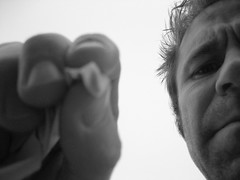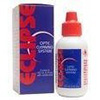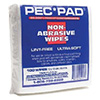How to Wet Clean Your Lens
Just admit it… you haven't cleaned your lenses in a while, have you? Let alone a good wet cleaning. I know, it's easy to let it go and forget about it. So go do it now!!!
Here's a little refresher course on wet cleaning your lens elements (and some product suggestions in case you don't have the stuff already). Keeping your equipment clean is a important part of basic maintenance and it will make your gear last longer. Lenses are no exception, and it's easy to forget about deep cleaning the front and rear elements because they usually appear to be quite clean at a glance. But if you haven't given them a good wipe-down for a while, it's more than likely that you've accumulated some dust and grime.
Here are the basic steps for wet cleaning your lens. If you've never done it before, make sure you're comfortable with the process and you understand the risks involved. As for the products involved… we're talking less than $40 and the only consumables are the cleaning solution and tissues which should last a year or more.
1. BLOW
Before you even think about touching your lens with any type of cloth, blow off all the big stuff that might scratch your glass. My favorite blower is the Rocket Blaster from Giottos — these things put out a great stream of air and I use mine for lens cleaning, sensor cleaning, film cleaning, and scaring the kids when they least expect it. If you don't have one already, you can purchase a Giottos Rocket Blaster at Amazon.com for about $10.
2. BRUSH
Even if you blow off the lens, you'll still have some particles hanging on for dear life. A lens brush will help pull off the rest of the “big stuff” before you hit the glass with a cloth. You can purchase a lens cleaning pen with brush on Amazon.com for about $8.
3. WET
Wet the wipe, not the lens! This is important! Don't drop any kind of liquid straight onto your lens — it could cause damage to the inside parts. Instead, wet a lens tissue with a few drops of lens cleaner or alcohol (which is what lens cleaners are for the most part). You can purchase Eclipse Cleaning System Solution at Amazon.com for about $10 — this stuff is amazing, plus you can use it to clean your sensor.
4. WIPE
They make these special little wipes called lens tissues that are super soft, ultra clean, lint free, and intended for single use. This is exactly what they're made for, and they're cheap — so use them! You can purchase PEC-PAD Lint Free Wipes at Amazon.com for around $8 per 100 pack.
A WORD OF CAUTION: Just be careful when making physical contact with optical quality glass — this stuff is really smooth and it can be scratched with something as small as dust. Just don't be careless. But at the same time, don't be afraid to do this simple task on your own. When done correctly, you should have nothing to worry about. Here's a pretty good instructional video I found that should boost your confidence.
And listen, there's always more than one way to do the job — so don't take this stuff as the Gospel. For you seasoned photographers out there, how do you clean your lenses?





libeco
November 6, 2009I don’t know if the Nikon lens pen has this too, but I bought a cheap lens pen on ebay which has a brush on one side and a special carbon based brush on the other side. It might seem awkward, but it actually works perfect! It gives the same effect as using a newspaper to remove smears from your window after you’ve cleaned it with water.
libeco
November 6, 2009Oh, and for the video: I know a lot of people like to use a UV-filter, but in my opinion it’s useless. Spending a lot of money on a lens to get the best image possible and then putting a cheap piece of glass in front of it just doesn’t make sense. A lens is made for taking pictures, sure it’s a sensitive piece of equipment, but it’s made for using. It’s like buying a Lamborghini, but not driving it because you’re afraid something might happen to it. A better advise is to get a good insurance.
Brian Auer
November 6, 2009Yeah, I’m not a fan of UV filters either, but some folks swear by them. My approach is to always use a lens hood to protect from bumps and scrapes, and to keep the lens elements clean on a regular basis.
libeco
November 6, 2009I must admit that I don’t clean my gear often enough, it’s just not that high on my list of priorities I guess. It also doesn’t help that even though the lens might be dirty, it still won’t show up on the picture.
Michael W. Gray
November 9, 2009Also be aware, compressed air can be a bad idea for cleaning your lenses. The amount of force applied by the compressed air can actually cause any hard grit to scratch your lens coating, if not the actual glass itself.
If you only have canned air available, remove the straw that most come with and test the distance on your arm. If the air can push your flesh down, it has enough force to damage you lens. About 6-8 inches will normally soften the force enough not to cause damage and still remove grit.
It is immensely better to use the Giottos Rocket or other bulb based blower over compressed air, but it it is all you have, take additional care.
brett maxwell
November 13, 2009i have found much freedom in just not worrying about it. i very rarely shoot at a smaller aperture than f8, so tiny little scratches will never be noticed in any way.